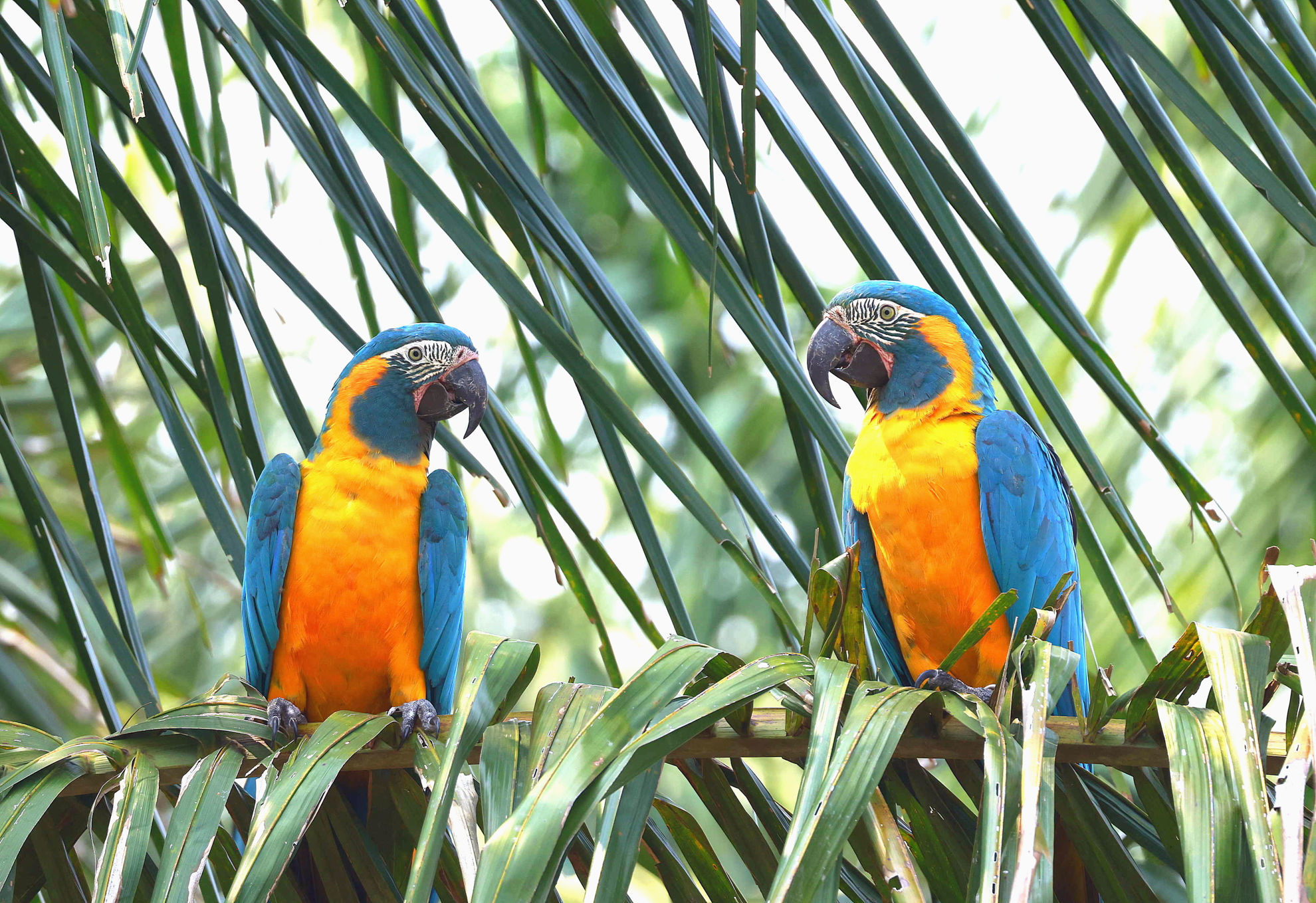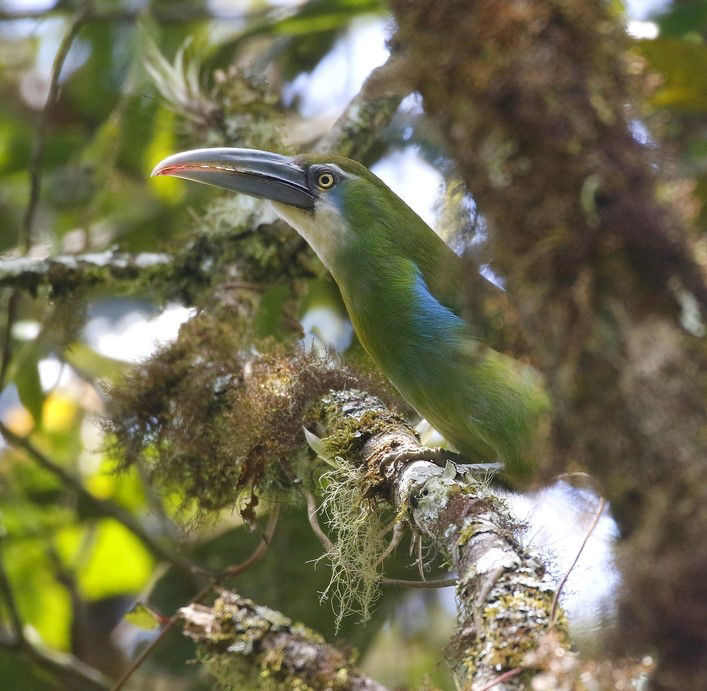Toll Free: 800.328.8368
Phone: 512.328.5221
Grand Bolivia: Part I
Upcoming Dates
September 7 - 22, 2026
Departs
Santa Cruz
Returns
Santa Cruz
Tour Limit
9 (1 available)

Blue-throated Macaw © Andrew Whittaker
Bolivia is truly a hidden gem offering a remarkable avian diversity with many exciting and varied habitats. This overlooked birder’s paradise is home to no fewer than 1,450 bird species—in an area barely a tenth the size of the United States! Part I of our exciting Grand Bolivia tour finds us birding such amazing biomes as lush southern cloud forests, lovely inter-Andean dry valleys, Yungas forest, the vast Pantanal wetlands teeming with life, and remote palm islands. Standout avian highlights will be two stunning and iconic endemic macaws, along with a wealth of around 400 species, of which many are seldom seen exciting South American birds. Dramatic scenery throughout and excellent photographic opportunities. A combination of Grand Bolivia Parts 1 and 2 offers the possibility of nearly 650 bird species, the highest number of bird species ever to be seen on any VENT tour!
A unique landlocked paradise, Bolivia is—among birders and naturalists alike—still poorly-known and typically overlooked. However, this South American country is unique, holding a superb variety of unspoiled habitats with currently 25 endemics, close to 100 near-endemics, and several newly described species. Bolivia is one of the world’s last birding frontiers, where new discoveries are almost expected (we have had a few!). Macaws abound with seven species probable, including two simply stunning endemics, Red-fronted and Blue-throated (worth the trip alone), and greats such as Yellow-collared and the rare Military Macaw. We highlight a wide range of other beauties, too, such as Tucuman Parrot, Orinoco Goose, Red-faced Guan, Cream-backed Woodpecker, Ringed Teal, Spot-backed (Chaco) and Black-streaked puffbirds, Blue-banded Toucanet, Giant Antshrike, White-throated Antpitta, Slaty Gnateater, Yungas Manakin, Olive-crowned Crescentchest (highland form), Band-tailed Fruiteater, and endemic Gray-crested Finch, all of which burnish Bolivia’s reputation as an undiscovered birding mecca.
Bolivia has made great strides in the past two decades upgrading its infrastructure, with enormously improved roads and surprisingly good guest accommodations—excellent in some areas—and the country has made significant progress socially and economically as well. Despite such modernization, age-old customs flourish and are constantly on display, as evidenced by colorful and often strictly traditional clothes and dress, colorful and diverse markets, and many pastoral landscapes.
Our introduction to Bolivian birding begins in the city of Santa Cruz, where we visit its lovely botanical garden for Yellow-tufted Woodpecker, Bolivian Slaty Antshrike, Purplish Jay, Blue-crowned Trogon, and Three-toed Sloth. We also visit a rich new wetland full of water birds including the lovely localized Ringed Teal. We depart the capital for the lush Andean foothills and Refugio Los Volcanes, a true paradise in an idyllic isolated and scenically stunning valley on the edge of Amboró National Park, where we’ll enjoy a lovely mild climate, cool star-filled nights, and spectacularly clear daytime skies. Cloaked in Yungas forest rich in southern Andean birds, this special area will yield a host of marvelous birds. Majestic Andean Condors and Military Macaws abound around our lodge among a treasure-trove of possibilities including White-throated Piping-Guan, Green-cheeked Parakeet, Red-necked Woodpecker, rare Subtropical Pygmy-Owl, Plush-crested Jay, endemic Bolivian Tapaculo and Recurvebill, Slaty Gnateater, Riverbank Warbler, lovely White-winged and Blue-browed tanagers, and Yungas Manakin.
Next, we will bird the unique inter-Andean dry valleys, home to several range-restricted and sought-after endemics. At our lovely secluded eco-lodge, we overlook breathtaking sandstone cliffs, among giant columnar cacti, where we will enjoy flocks of stunning endemic Red-fronted Macaws, certainly the most beautiful macaw of all. Other dandies include the endemic Monk (Cliff) Parakeet, White-fronted and Striped woodpeckers, the odd White-tipped Plantcutter, Black-and-chestnut Warbling-Finch, endemic Bolivian Blackbird, and Ultramarine Grosbeak. Yet another highlight will be the unparalleled opportunity for exploration of the exciting Chaco Serrano and Tucumano cloud forests of the Samaipata area. Here, the orchid-rich forests should reward us with swirling flocks of colorful mountain-tanagers of several types; massive Black-and-chestnut or Solitary Eagle; endemics such as Bolivian Brushfinch; and Gray-bellied Flowerpiercer, as well as lovely Crested Quetzal, Blue-banded Toucanet, Red-crested Cotinga, and Olive-crowned Crescentchest (highland form). Night birding offers us a good chance for Rufous and Scissor-tailed nightjars and two poorly-known owls: Buff-fronted Owl and Cloud-forest Screech-Owl. Other highlights should include Tucuman Parrot, Yungas and Red-faced guans, Cream-backed Woodpecker, Giant Antshrike, and White-throated Antpitta. We will also visit a private hummingbird garden.
For our grand finale we will visit the bird-rich Pantanal of Trinidad, home to the exquisite endemic Blue-throated Macaw, on a private ranch (working on their conservation) with a healthy breeding population. These bird-rich marshes and gallery forests hold the likes of Greater Rhea, Jabiru, Whistling Heron, Slender-billed Kite, Southern Screamer, Chestnut-fronted Macaw, Toco Toucan, Hoatzin, Red-billed Scythebill, Band-tailed Manakin, Campo Flicker, and stunning Scarlet-headed Blackbird, as well as the rarely seen Sulphur-bellied Tyrant-Manakin and endemic Unicolored Thrush, Plain Softtail (nominate), and Rio Beni Titi Monkey. A wonderful morning boat trip along the Rio Mamore is great for birding and seeing the rare Orinoco Goose, and for observing pods of amazing Pink River Dolphins and much more.
Good accommodations and food; easy rich birding throughout; mostly easy walking on well-kept forest trails at lodges or along dirt tracks; one pleasant boat trip in covered boat along the Rio Mamore; travel by comfortable air-conditioned bus and flights to Trinidad and back; tour pace moderate (but with some early starts); midday breaks; mostly cool, pleasant temperatures in the foothills and warm to hot in Trinidad.

Blue-banded Toucanet © Andrew Whittaker
Price: $7,995 in 2025
Due to limited availability, please contact the VENT office to register for this departure.
Departure Dates
Route Map
Tour Leaders

Local
Leader
Field Reports
No Field Reports
Connecting Tours
Operations Manager

Celeste
Dillon
Questions? Contact the Operations Manager or call 800.328.8368 or 512.328.5221



